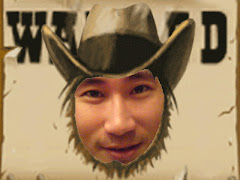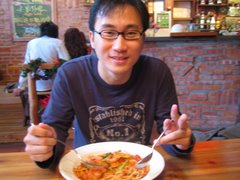
Pan's Labyrinth is a winner of 3 Academy Awards--"Best Cinematography," "Best Art Direction," and "Best Makeup." It seems to me that only the achivements in the film's 'form' were greatly appreciated. After seeing the film, I was quite surprised at the result; I would have thought that it should have been awarded with a few other honors for its 'content.'
It looks like a gothic fairy tale, but it's not just that! Rather, it's a juxtaposition of Postwar Spain/the Labyrinth, Adults' World/Children's World, Confinement/Escape, etc. Do the Labyrinth and the faun really exist? Maybe they do, and maybe they are just Ofelia's dreamy products that do not exist. The fairies and the assigned missions altogether could be thought of as the powerless girl's hope for a way out of cruelty and meaninglessness.
Her death lends itself to ending the film as a token of redemption. And if you would rather deem it to be a fairy tale, then she finally gets the last mission done and will live a happy life hereafter as a princess in the fairy world. Through the juxtaposition, an audience can easily see the contrast and the tension.
.jpg)

2 comments:
last time, we talk about fiction,
契訶夫說過,小說的創作裡,所謂高下的層次,像是軍旅裡的元帥與步兵。元帥與步兵各有各的作用。
郝明義也說,一本列入經典文學的小說,和一本通俗小說(commercial novel),各有各的作用。
似乎頗能呼應你的看法。
這個議題很有趣,也沒什麼標準答案,這也是為什麼這麼久以來仍有許多人熱烈的討論著。
記得很多年前,偶然在誠品看到Italo Calvino的Why Read The Classics,我想裡面有些話也許可以作為我們區分所謂"經典作品"的一些參考。
"The classics are the books of which we usually hear people say 'I am re-reading . . .' and never 'I am reading . . .'"
"A classic is a book that has never finished saying what it has to say."
Post a Comment